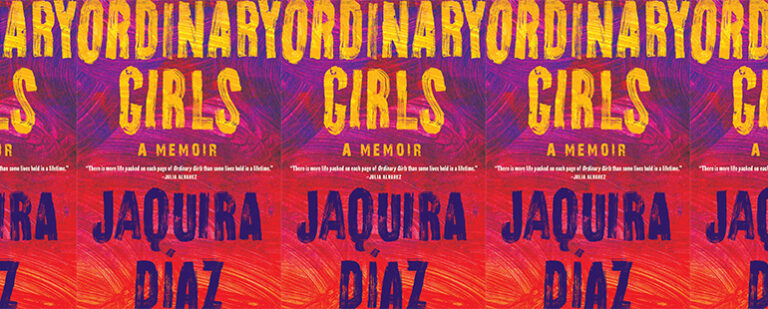The World Will Be Tlön

Jorge Luis Borges’s “Tlön, Uqbar, Orbis Tertius” is the first story in his 1956 collection Ficciones, and it is a disorienting place to start. Over dinner one night, Borges’s friend and fellow Argentine writer Adolpho Bioy Casares recalls an entry on the country Uqbar in The Anglo-American Cyclopedia, but it does not exist in the edition Borges has on hand. Uqbar, which may or may not be located in Asia Minor, seems to be imagined by Bioy, until he finds another version of the same encyclopedia “at some sale or other” with four extra pages that contain the entry. Despite Bioy’s discovery, Borges is unable to locate any other record of Uqbar in atlases, maps, or travelers’ memoirs. His search eventually leads him to A First Encyclopedia of Tlön, which is “a vast methodological fragment of an unknown planet’s entire history.” But Tlön becomes a part of our world too: Borges soon notices the alphabet of Tlön on a compass in an apartment and sees a metal cone with images of tlönic deities in a country store. He eventually uncovers Uqbar and Tlön as part of a centuries-old secret society’s scheme to infiltrate our world with a new orderly yet fantastic reality.
Borges recounts the story to warn us against Tlön’s naturalization, which has steadily progressed since the early seventeenth century. History, language, and science, he says, will eventually refer to knowledge codified in Orbis Tertius, the name given to the encyclopedia of Tlön. English, French, and Spanish will disappear, replaced by the tlönic language. “The world will be Tlön,” he writes. But as Borges explains, most people will welcome this takeover. Reality “longed to yield,” so intoxicating is order and organized information to humans.
I first read “Tlön, Uqbar, Orbis Tertius” in a Latin American literature course in college. I barely read Spanish at the time, which made it even harder to follow the thread of a story where facts appear reliable but are constantly undermined. Borges seamlessly slips his descriptions of Tlön and Uqbar among references to actual people, places, and literary references, and I admit that the distinction between fiction and reality was not initially clear to me. His investigation into Uqbar turns on the expectation that what appears in encyclopedias is consistent and factual, and I guess I too faithfully believed in the authority of such sources. I was grasping for stable ground, trying to wade through the details of specific authors, encyclopedias, and histories to understand the intrusion into reality that Borges imagined, all in a foreign language.
Some twenty years later, I remembered Borges’s story when trying to make sense of my daughter’s intellectual disability as defined by the Diagnostic and Statistical Manual of Mental Disorders (DSM), the professional resource published by the American Psychiatric Association. Although encyclopedias have lost their authority since the mid-twentieth century, replaced by Google searches and crowdsourcing, diagnostic manuals remain resources of established truth. Psychiatry is a science of behavior rather than objective cause, and it depends on the DSM because of its evasive subject of study. There is no blood test or genetic marker to determine without doubt that someone is schizophrenic, autistic, or depressed. Diagnosis depends on a description of symptoms agreed upon by professionals. And those symptoms and the language used to describe them change. This means that humans—not just individual doctors and therapists but also the history of professional decisions—are responsible for the treatment and understanding of behavior. Like Orbis Tertius, the DSM seemed to me like a product of a secret society gradually working to shape a reality of their own.
The DSM is an intimidating tome of professional practice, consisting of a labyrinthine taxonomy of categories and criteria. Although I often refer to it online, I wanted to sense its authority by feeling its weight in my hands. The fifth edition has 947 pages and weighs 3.7 pounds. It has expanded considerably since its first edition was published in 1952 as a thin paperback. Lining up copies of all five editions on my desk creates a small staircase, and its swelling suggests its gradual dominance. Like all encyclopedic volumes, including Borges’s fictional Orbis Tertius, its purpose is to provide comprehensive information so that nothing falls through the cracks. But as Borges’s story reveals, cracks are always visible. Experience and its description are never a perfect match.
Wading into the DSM is like reading a foreign language—both are filled with unfamiliar words and meanings. Perhaps more profoundly, the DSM introduced me to a foreign way of thinking and conceptualizing the world. I am not a psychiatrist or psychologist, but my daughter’s life is shaped by the definition of intellectual disability in the DSM. I want to understand and prepare for that influence. It will impact how my daughter sees herself. It will affect how the bureaucratic systems that will shape her world—healthcare, law, education—will judge her competence, independence, and even her human worth.
*
When I was holding my daughter for the first time in the hospital room, a doctor pointed out certain features of our new baby—the crease in the middle of her palm, the skin folds around her eyes, her low muscle tone—that indicated she likely had Down syndrome. But no one could tell me for sure, and I did not accept this unexpected new reality until we looked at the blood tests at our first doctor’s appointment a few days later. There they were. Three wiggly copies of the twenty-first chromosome appeared in a karyotype that offered visual proof.
Although it was expected, the diagnosis of intellectual disability emerged later. Like the signs of Tlön that Borges began to notice in his world, the language of intellectual disability gradually invaded our lives, giving form to my daughter’s differences. At first therapists talked about her developmental delays, how my daughter was not sitting up, babbling, or holding a spoon at an age when most babies had mastered these skills. When she entered preschool, her teachers observed that she had trouble following instructions and sitting still for the expected amount of time. My daughter was given her first IQ test before kindergarten. The school psychologist administered a series of assessments masked as games—stacking blocks into a particular pattern, choosing the word that means the same as others—then translated this information into a statistical language, numbers that helped him understand my daughter in his own, professional way.
A third copy of the twenty-first chromosome is part of my daughter’s genetic fabric, but the language of intellectual disability in the DSM is much more fluid, synonymous with the labyrinthine swirl of sources and meanings in “Tlön, Uqbar, Orbis Tertius.” After reading the entry several times, I learned that intellectual disability is a subcategory within the larger classification of neurodevelopmental disorders. These disorders typically manifest early in development and are characterized by “developmental deficits that produce impairments of personal, social, academic, or occupational functioning.” Other neurodevelopmental disorders include autism spectrum disorder and attention deficit/hyperactivity disorder. These conditions are grouped together because they all typically manifest before a child enters grade school. The DSM also states that they often co-occur.
Psychologists consider IQ tests to be one of their most important diagnostic tools, and the diagnosis of intellectual disability leans heavily on the IQ score. The DSM states that people diagnosed with an intellectual disability have an IQ below 70, but that three categories must be met to validate a diagnosis of intellectual disability: 1) deficits in intellectual functioning that would be defined through intelligence tests that assess reasoning, problem-solving, planning, and abstract thinking; 2) deficits in adaptive functioning that limit individual independence and social responsibility in everyday life across multiple environments; and 3) the emergence of these deficits during the developmental period of one’s life. The diagnosis is then broken down into four categories of severity: mild, moderate, severe, and profound.
Labeling gives legitimacy and form to subjects. It is not possible to diagnose, to treat, or to submit an insurance claim for that treatment unless its cause is in the DSM. Each of the hundreds of diagnoses in the DSM corresponds to a particular code in the International Classification of Diseases (ICD). The ICD was created by the World Health Organization and its inclusion in the DSM helps psychiatrists cross-reference, like translation between two languages. A mild intellectual disability is classified as 317, yet this diagnosis might be accompanied by others, such as a range of communication disorders (315.32-315.39), autism spectrum disorder (299.00), or the strangely vague “specific learning disorder” (315.0-315.2). My daughter qualifies for educational assistance—speech, physical, and occupational therapies and an intervention specialist—because she is classified as 317. This diagnosis will qualify her for Medicaid and living support when she is an adult. The code 317 will allow my daughter to access higher education programs and federal financial aid specifically designed for people with intellectual disabilities, even if she does not complete secondary education in a traditional way. So while the DSM feels like foreign territory, the diagnosis encourages me to yield to its power.
*
As I read about intellectual disability, I get the familiar impulse to distinguish between the description in the DSM and who my daughter actually is. There is something comforting about finding her diagnosis so thoroughly explained, but I am aware that she both matches and exceeds such a description. While I can’t deny that my daughter has “difficulty in accurately perceiving peers’ social cues” and needs “some support with complex daily living tasks,” I also resist the implied conclusion that there is something wrong, something in need of treatment with these parts of her. Even though this diagnosis fits, it does not account for how she sits on the couch with her dad and looks at maps in an atlas for hours, how she loves her friends despite not sounding or acting exactly like them, and how she searches for crayfish in the creek near our house.
Giving a name to someone’s difference is treatment itself. It offers legitimacy to suffering and validates experience. It also provides an explanation of someone’s behavior—someone with pyromania (312.33) isn’t just a bad person but has a psychological illness that is potentially treatable. Diagnosis also shapes identity. Asperger’s syndrome is a relatively new term, coined in 1981 and taken up by the fourth edition of the DSM in 1994 as Asperger’s Disorder (299.80). The DSM lists its diagnostic features as “severe and sustained impairment in social interaction” and “the development of restricted, repetitive patterns of behavior, interests, and activities.” Since its appearance in the fourth edition, support communities have emerged and public figures like the environmental activist Greta Thunberg have shaped the group’s cultural identity. But when I searched the fifth edition of the DSM, I could not find a similar entry on Asperger’s syndrome. The only reference is a curt instruction to give individuals previously diagnosed with Asperger’s syndrome, according to the preceding edition, the diagnosis of autism spectrum disorder.
Published in 2013, the fifth edition no longer acknowledged Asperger’s syndrome as a distinguishable condition. One psychologist I talked to said that it had become “fashionable to have an Asperger’s diagnosis instead of autism.” The change in the DSM, she told me, was based on research that failed to demonstrate a clear distinction between the two. I found myself wondering which reality to believe, the world without Asperger’s in the DSM or those who claimed the condition as a fundamental part of their identity. After the publication of the fifth edition, members of online communities of people with Asperger’s syndrome began to wonder if their diagnosis was real. One participant asked, “How autistic do you have to be to be called autistic? How autistic do you have to be to be called Aspergers?” To many, the DSM’s restructuring appeared to undercut the credibility of a cultural community. The manual was in conflict with one’s sense of self.
My curiosity grew as I looked back on earlier editions of the DSM and found entries that do not belong. Homosexuality was diagnosed as a “sociopathic personality disturbance” in the first edition and was reclassified as a “sexual deviation” in the second. I found no mention of homosexuality in versions of the DSM published after 1973. Later I learned that gay activists disrupted the 1970 and 1971 meetings of the American Psychiatric Association and forced its members to acknowledge that homosexuality was not a part of human experience in need of their treatment.
Like Tlön, the DSM is a world that was made and then repeatedly revised. What does and does not exist depends to a large degree on what is written down, how it is described, and how it is organized. The crux of Borges’s story, couched in confirmable facts but ultimately fictional, is to propose a philosophy of the imagined world of Tlön, in which “every mental state is irreducible: the mere fact of naming it—i.e. of classifying it—implies a falsification.” The DSM attempts to define conditions that are personally experienced, and therefore it never precisely describes its subject. “Tlön, Uqbar, Orbis Tertius” reveals what the DSM by its very nature tries to deny—that the language and ideas through which we navigate the world are always tenuous, that the ground that we stand on shifts and gives way to larger systemic whims.
*
Like other people with or without Down syndrome, my daughter likes to talk to herself. Although, it’s not exactly to herself. She talks to an imaginary baby she has named Baby Boomshalala. This baby seems to be with us more than I’m aware, as I’m often confused when my daughter asks me, “Do you want to play with us?” I used to think that this was just a grammatical slip, but no, she is asking if I want to play with her and Baby Boomshalala.
I don’t find Baby’s constant presence particularly troubling. I see it as how my daughter processes new experiences. It’s also a way for her to have a bit of control, as I think Baby will do just about anything that my daughter wants. Talking to herself can still pass as an endearing developmental quirk when she is nine, but if she stays around when my daughter is an adult, Baby Boomshalala could be judged as a sign of mental illness. I obsessively ask my daughter each day after school who she played with at recess. I make a mental note if too many days go by when she only mentions Baby Boomshalala as her companion on the playground.
I started to wonder how intellectual disability got into the DSM in the first place. By way of its inclusion, an intellectual disability is defined as a mental disorder. It states, “A mental disorder is a syndrome characterized by clinically significant disturbance in an individual’s cognition, emotion regulation, or behavior that reflects a dysfunction in the psychological, biological, or developmental processes underlying mental functioning.” Although I do not know for sure, I imagine other diagnoses in the DSM, like bipolar and anxiety disorders, are traumatic disruptions to one’s sense of self and involve a significant amount of suffering and pain. Despite the sporadic appearance of Baby Boomshalala and frustration with the demands of school, I do not think that my daughter’s intellectual disability causes her to suffer. I do not know yet how my daughter feels about it, but I do not want her intellectual disability to be cured. On the contrary, I want to help her navigate a world that has yielded to the taxonomic power of the DSM.
Intellectual differences are often associated with mental health challenges, which have historically been isolated in the realm of fools and madness. In an old volume on the history of psychiatry, I found a reference to the American Issac Ray, who in 1838 distinguished between idiocy caused by congenital defects and idiocy caused by lesions or tumors, representing one of the first attempts to make a distinction between kinds of mental differences. But he also questioned the value of classification. “Such divisions” he wrote, “have not been made in nature and cannot be observed in practice.” To Ray and others, classification seemed more useful for data collection than treating patients. The federal government began collecting and publishing statistical data on the “idiotic and insane” in the census of 1840. The International Congress of Alienists categorized idiocy as one of seven forms of insanity in 1867. The Oxford English Dictionary defines “alienist” as an expert witness in court to assess whether a defendant is sane. The root of this now obsolete term suggests that the profession has historically seen those with mental differences as a foreign threat.
I decided to trace the evolution of intellectual disability in the DSM, starting with the first edition published in 1952. In these investigations, I was hoping to uncover an origin story—how this diagnosis came to be and what parts of its past still linger in the present. The first edition classified what we now call intellectual disability as chronic brain syndrome. “Mongolism,” which was the racist, phenotypic label given by the physician John Langdon Down to what is now called Down syndrome, is listed as a cause. Down associated “Mongoloid features” with the behavior of those under his care at the Asylum for Idiots at Earlswood in London. The description in the first DSM states that chronic brain syndrome is a category formerly known as “secondary mental deficiency,” or “mental disturbances” linked to a biological cause. I found three classifications of chronic brain syndrome associated with syphilis, yet the entry associated with Mongolism is the only one for which an IQ score is mentioned.
Published in 1967, the DSM II lists mental retardation (310-315) as a main category of diagnosis and defines subcategories that specify severity (borderline to profound). The cause is specified through decimal point, although by 1967, such attention to syphilis was apparently no longer necessary. “With chromosomal abnormality; autosomal trisomy of group G (Trisomy 21, Langdon-Down disease, Mongolism)” is .5. It states, “this is the only common form of mental retardation due to chromosomal abnormality. (The others are relatively rare.) It ranges in degree from moderate to severe with infrequent cases of mild retardation. Other congenital defects are frequently present, and intellectual development decelerates with time.”
Until the fifth edition was published in 2013, the DSM referred to intellectual disability as mental retardation. The change in label indicates a relatively seismic shift in thought, at least for an institution that once pathologized homosexuality. The difference in terms suggests a slow transition from seeing intellectual disability as a defect of a person to viewing it as more of a mismatch between the person’s capacities and the environment within which she is expected to live. I read that “the various levels of severity are defined on the basis of adaptive functioning, not IQ scores, because it is adaptive function that determines the level of support required.” Despite the change, the language of failure and inadequacy still lingers. Intellectual disability is still described in terms of deficits and a failure to meet certain standards, rather than language that might suggest that the environment, the conditions of our modern world, might be what is deficient, which would open up the possibility for social change. I hope this will occur within my daughter’s lifetime.
At the end of his story, Borges decides to pay no attention to the growing influence of Tlön and to continue revising the translation of Sir Thomas Browne’s Urn Burial from 1658, which he claims to not intend to publish. Ultimately, I choose something similar to the way that Borges decides to deal with the world as Tlön. The current definition of intellectual disability in the DSM is far from what I see as my daughter’s lived experience. The DSM describes a person with an intellectual disability as potentially a threat to self and others. It states that a lack of communication skills in people with intellectual disabilities may lead to aggressive behavior. Gullibility and lack of risk assessment skills may result in exploitation and victimization via physical or sexual abuse. While perhaps I fear such trauma more than most parents, I am determined to provide a life for my daughter that is not ruled by the DSM, nor shaped by the spell of its anticipated outcomes. In an interview, Borges once remarked, “I wonder why a dream or an idea should be less real than this table, for example, or why Macbeth should be less real than today’s newspaper. I cannot quite understand this.” My daughter’s interaction with the world will be shaped by her assessment, diagnosis, and classification. But how I see my daughter and how my daughter sees herself are just as valid as her diagnosis. Baby Boomshalala is real, and she is welcome to stay with us as long as she likes.


